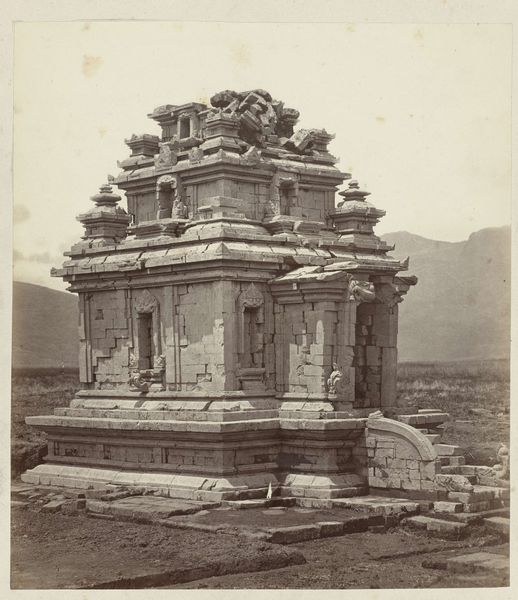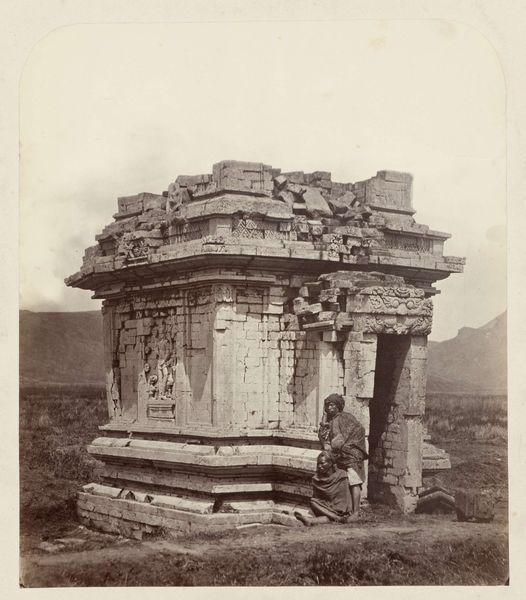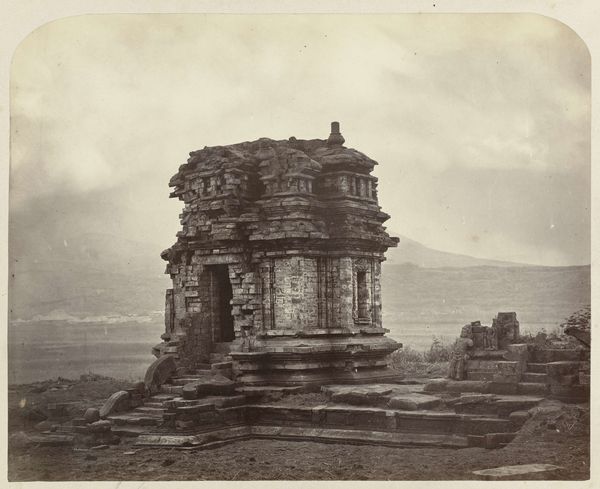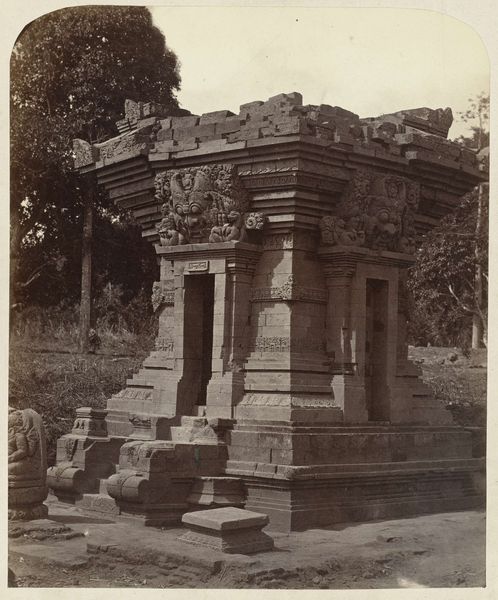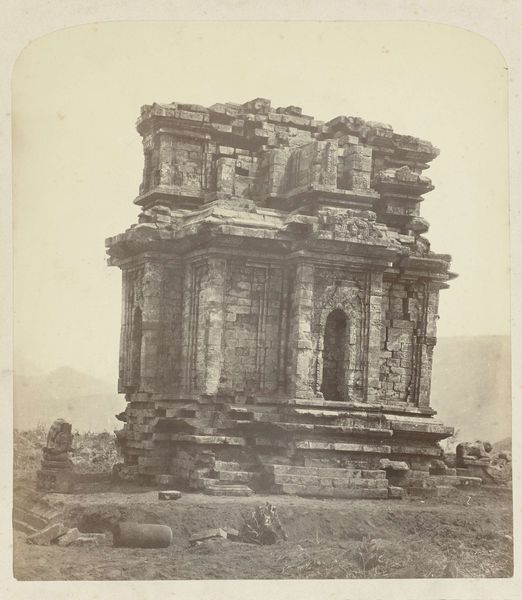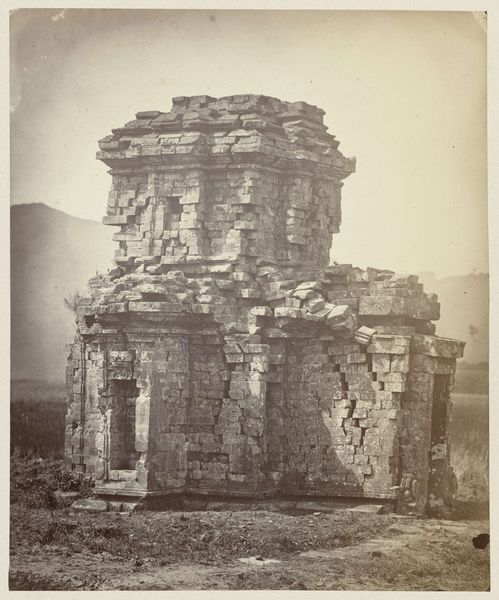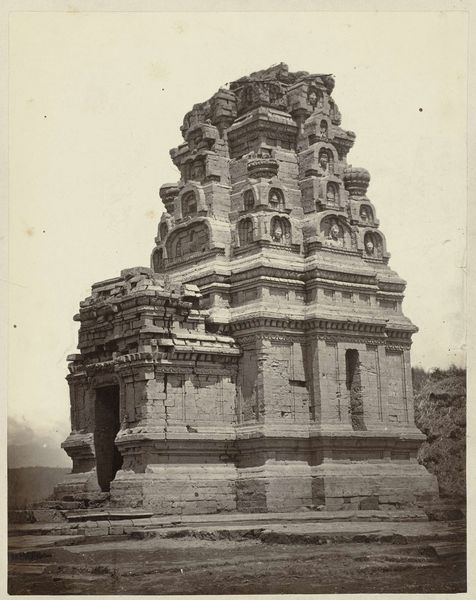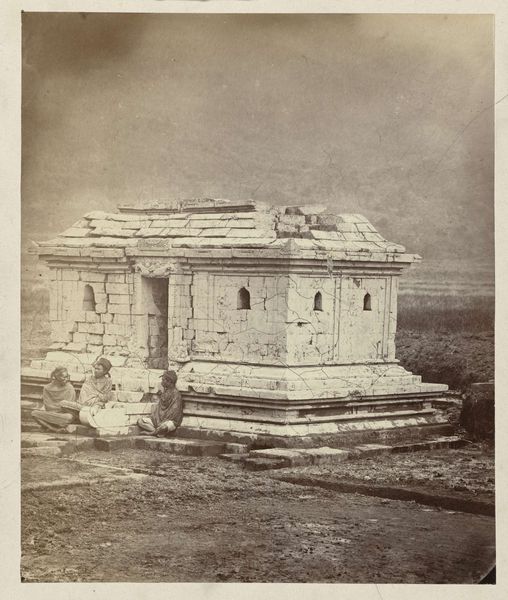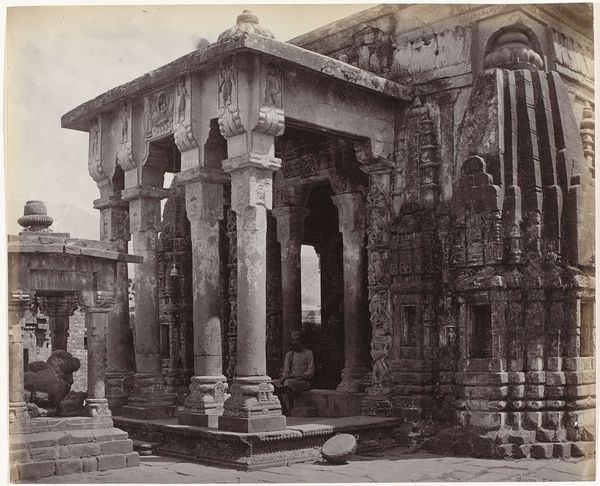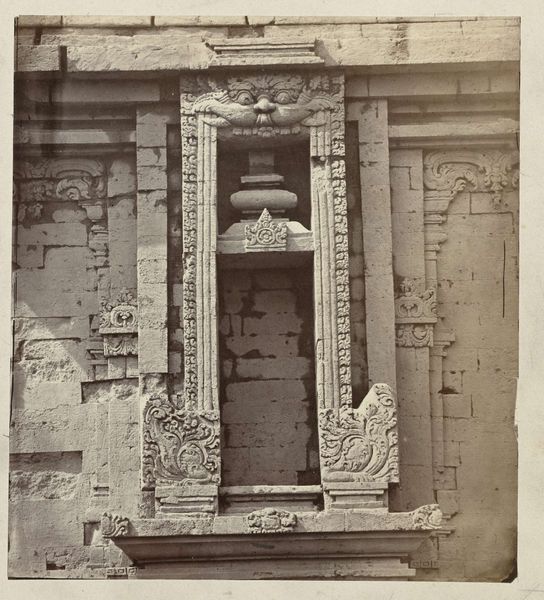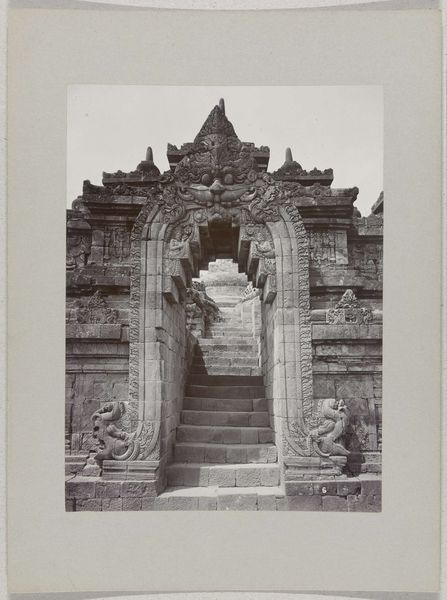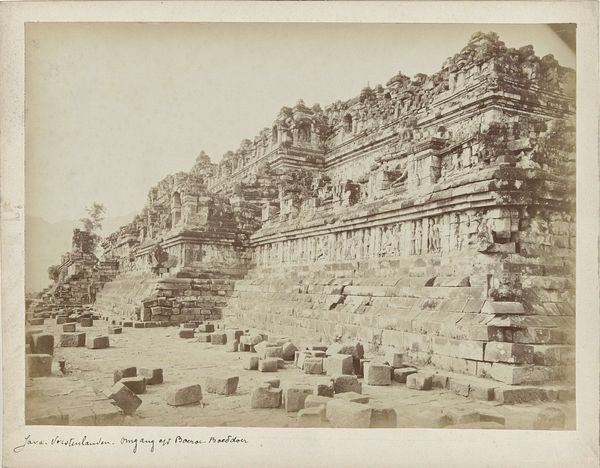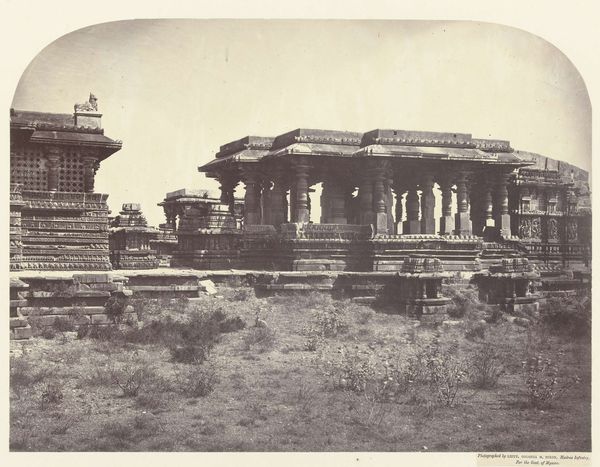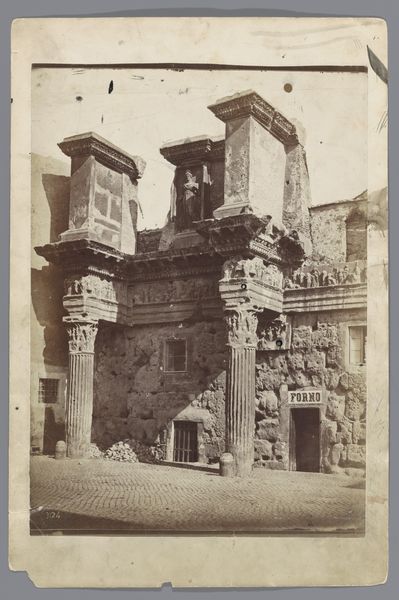
Candi Puntadewa, general view with the staircase projection (west). Dieng plateau Wonosobo district, Central Java province 8th-9th century Possibly 1864 - 1867
0:00
0:00
print, photography, architecture
# print
#
sculpture
#
asian-art
#
photography
#
ancient-mediterranean
#
19th century
#
islamic-art
#
architecture
#
statue
Dimensions: height 340 mm, width 290 mm
Copyright: Rijks Museum: Open Domain
This photograph of Candi Puntadewa was taken by Isidore Kinsbergen in the late 19th century, documenting a structure built between the 8th and 9th centuries. Kinsbergen, a Dutch-Jewish photographer, had a complex relationship with the colonial context in which he operated in Java. Consider the power dynamics inherent in the act of photographing indigenous architecture by a European during this era. Kinsbergen's work, while providing valuable documentation, also served the colonial gaze, framing Javanese culture through a Western lens. This gaze often exoticized or romanticized the 'orient', reinforcing a sense of Western superiority. Candi Puntadewa, as a sacred space, embodies a rich spiritual and cultural history. Kinsbergen's photograph captures the physicality of the temple. As you look at this image, think about how the act of photographing a sacred site transforms its meaning and accessibility. How does it feel to view a place of worship through the lens of colonial history? This image invites us to reflect on the intertwined histories of representation, power, and cultural heritage.
Comments
No comments
Be the first to comment and join the conversation on the ultimate creative platform.
